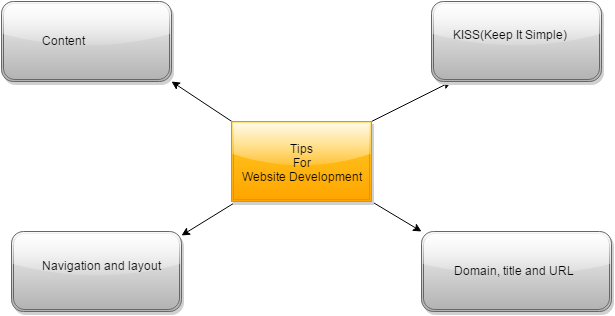When the need arises to increase the search traffic of your website, you may need to implement several strategies. Without adopting the proper techniques and strategies, it is not possible to gain the required traffic on your website.
Here comes the need to learn the art of writing SEO friendly titles. Whenever you need to create a money-making blog, your foremost priority must be the increment of the overall organic traffic.
This is because the search traffic is the support for any successful website. The present guide will let you understand the best practices for making a search engine friendly title tag for your pages. Let’s look at it:
What are SEO Friendly Title Tags?
Basically, a title tag is recognized as an HTML element that describes the title of any blog post or page. The search engine friendly title tags are usually optimized for the search engines and it generally states the context of a page.
When you need for writing title tags, you need to first understand the meaning of search engine friendly tags. Therefore, your goal for writing title tags must be making them as relevant and precise as possible.
Moreover, they must offer an appropriate description of a page’s content. To know more about the importance of the SEO friendly titles, look below:
Are Title Tags Still Important?
The search engine friendly title tags are very important. Generally, the titles are the first thing people would see. Not just on search engines but they will show up everywhere.
For example, they will appear on email lists, social media sites, forums, etc. It is known that 8 out of 10 people read your headlines initially before they decide to read your blog posts.
This is the reason why you must create superior quality and engaging titles for the title tags for SEO. When you want to create amazing titles for Google, you need to understand the importance of title tags. Let’s look at the best practices to know about search engine friendly title tag:
7 Best Practices of Writing SEO Friendly Titles
To create the benefit-oriented title, it is necessary to know how to create a search engine friendly title tags for the pages and blog posts. Let’s look at the best practices for improving your organic rankings in 2024 and how to implement the best practices for writing SEO-friendly titles:
1. Write “unique” titles
When it comes to SEO friendly titles, you need to learn how to write unique titles. It is known that the uniqueness is very significant when the matter comes to optimizing your posts, content, and titles. As a result, you will receive more traffic from popular search engines like Google.
It is sure that there will be lots of duplicate titles for identical content on Google search results. However, you have to make sure you create unique and engaging titles if you are willing to boost rankings.
For writing SEO friendly page titles, you need to target to making titles that are good for visitors and search engine bots. You need to make sure you prepare relevant titles because Google crawlers may get confused if you go for writing irrelevant page titles for your blog posts and web pages.
One more important thing is making use of the unique titles while interlinking. It is essential to make sure each page present on your website comes with a different title. The same title must not be there for multiple pages within your website. The uniqueness is most important for writing search engine friendly title tags.
2. Length of your titles matters
One of the greatest important things for search engine friendly title tags is making use of an optimal title length. Generally, Google shows the initial 50 to 60 characters of a title tag. Actually, there is no rule for a number of characters but it is important to keep your titles short and engaging. Make sure you try keeping your titles less than 60 characters.
One smart thing to do for creating a title tag is to prevent the characters that generally take up more space. To understand this, for example, a character like uppercase “W” is wider than a lowercase character such as “e”, “i”, “t” and so on. Make sure you avoid using capital letters in your titles.
3. Stop using “stop words”
It is important to understand about the LSI keywords for SEO. The search engines like Google stop processing stop words. These are the most common words like a, an, the, or and so on. Most search engines avoid these stop words. Generally, this is done to save space and increase the speed of processing large data while indexing or crawling.
You can avoid using stop words like a, and, but, etc. Instead, you can use the describing words in the beginning of page titles to let your website titles appear more natural. The LSI Keywords for SEO usually make your headlines more click-worthy.
4. Create headlines that get more clicks
The next strategy to focus on is the creation of headlines for SEO friendly titles that gain attention. Also, create titles that generate clicks organically from Google. While writing title tags and creating click-worthy titles, the 3 important things to consider are curiosity, benefit, and emotion.
You must create curiosity when you create website titles to boost your organic clicks. If you wish to boost your organic clicks then start showing benefits inside your title tags. People buy online because they connect with the emotions of another brand.
5. Usage of a brand in titles
When creating search engine friendly title tags, it is necessary to add your brand name at the completion of every single title tag which you make. If you have identified a brand name, you must include it for better click-through rates and better conversions.
However, if you are simply getting started and nobody knows your brand name then you must avoid it because it takes more space. You need to focus on making your click-worthy titles localized. If you want to get higher rankings for certain keywords in some demographics then you have to use them inside your page title section.
6. Create sensible meta descriptions
For the organic search listings, the 3 things showing up in SERPs (Search Engine Results Page) are title, URL, and meta description.
When deciding to work on writing SEO friendly page titles, you need to focus on meta description. A search result contains a title with URL and meta description. After knowing how to create click-worthy titles, let’s discuss how to create better meta descriptions to boost your overall organic rankings.
How to write search engine friendly meta description like a pro?
As per Google’s blog, there is actually no limit on the length of a meta description. But the search results often reduce it in order to fit the device width like a smartphone, desktop, laptop, etc. The length of the meta description is between 120 to 158 characters, and it is up to 920 pixels.
For the SEO friendly titles, you need to keep in mind that Google users read meta descriptions of your web pages that show up on Google SERPs with the titles.
The meta description shows up under your page titles on the Google search results. With the use of your focused keywords on meta description, you will get the SEO traffic. Therefore, you need not forget about optimizing your meta description.
Whenever you publish a post, supplement your SEO friendly titles with a superb meta description. In this way, you can successfully improve your click-through rates and also improve user engagement on your web pages and sites.
It is important to keep your meta description is a limit of 120 to 150 characters. If you do not keep in mind this limit, Google SERPs ignore the extra characters. You have to write your meta description for the users first and then Google will give you a top priority.
7. Use proper optimization tools
It is not possible to effectively write a benefit-oriented title if you don’t consider all the aspects. The use of proper optimization tools will help you create amazing titles for Google. If you are a WordPress user then there is an easy tip for you i.e. go for installation of a plugin.
With the use of plugins like Yoast SEO, it is possible to execute most of the things that are included in the above sections. For example, with the help of this plugin, you can include titles, meta descriptions, some other tags etc.
Generally, such plugins are free to download and any SEO beginners can easily use the suggestions provided by SEO by Yoast plugin in order to receive more organic traffic on their websites.
The below discussed are the recommended optimization plugins for title tags for SEO:
1. WordPress SEO by Yoast

When the matter comes to on-page optimization as well as making the wonderful titles for Google, the Yoast SEO plugin is the superb choice. It comes with lots of features. Generally, it is found that this plugin is the most downloaded SEO plugin with more than 20 million downloads. Also, it’s free version presents a broad range of features in order to optimize your content. It is easy to add focus keyword, modify your title, include meta description, boost your social media settings, etc.
2. Rank Math

The Rank Math plugin is known as the new entry but it instantly got famous among the blogging community. This is because it provides lots of useful features like optimizing up to 5 keywords to create sitemaps, 404 monitors, LSI tool integration, redirection system, etc. In case you are looking for an alternative to Yoast SEO plugin then Rank Math is a good choice.
Also, Read:
Catchy words list to write amazing blog titles
FAQs About SEO Friendly Title Tags
1. Why Google is not ranking my titles?
There are lots of reasons behind why your page titles to rank high could not be successful. It is possible that your titles may be stuffed with too many keywords. Also, it happens that your titles are not matching up with the query or the purpose of the user.
2. What is the difference between a title and heading tags?
When it comes to the difference between heading tags and title tags, they are both contextually the same. They both indicate what a particular web page is all about. But it is important to note that the title tags show up in search results while heading tags are present as the heading of a web page, inside your website.
You can use the same content for both these tags or you could use alternative titles. Generally, it is a better idea to make sure the title tags are short and relevant to the context. You can use the descriptive heading tags for superb user experience.
3. What is the title tag length for 2024?
Currently, Google shows up to 600 pixels on a desktop. Thus, it is a good idea to keep your title characters within a limit of 50 to 60 characters. It is possible to use the SERP preview tools like Portent, Sportibo, etc. to easily adjust your title’s length.
4. How to track keyword rankings based on titles?
For tracking the keyword rankings based on your titles, you can make use of the Google Search Console (GSC). It will help you easily track keyword rankings depending on your title tags. Follow the below steps:
Step-1: First of all login to Google Search Console
Step-2: Now navigate to Performance
Step-3: In this step, you have to click on the tab called “Pages”
Step-4: Now you need to find a list of all the pages which you want to measure, click on them. Now, you have to click on the “Queries” tab.
By following the above steps, you will get a list of all the queries at the page level that are affecting the rankings and click through rates. Depending on this data, you can do needful changes in your title tags to improve the rankings.
Conclusion:
Before posting your blog posts, you have to make sure you follow all the above practices for the SEO friendly titles. These practices are effective at boosting the ranking of your website.






